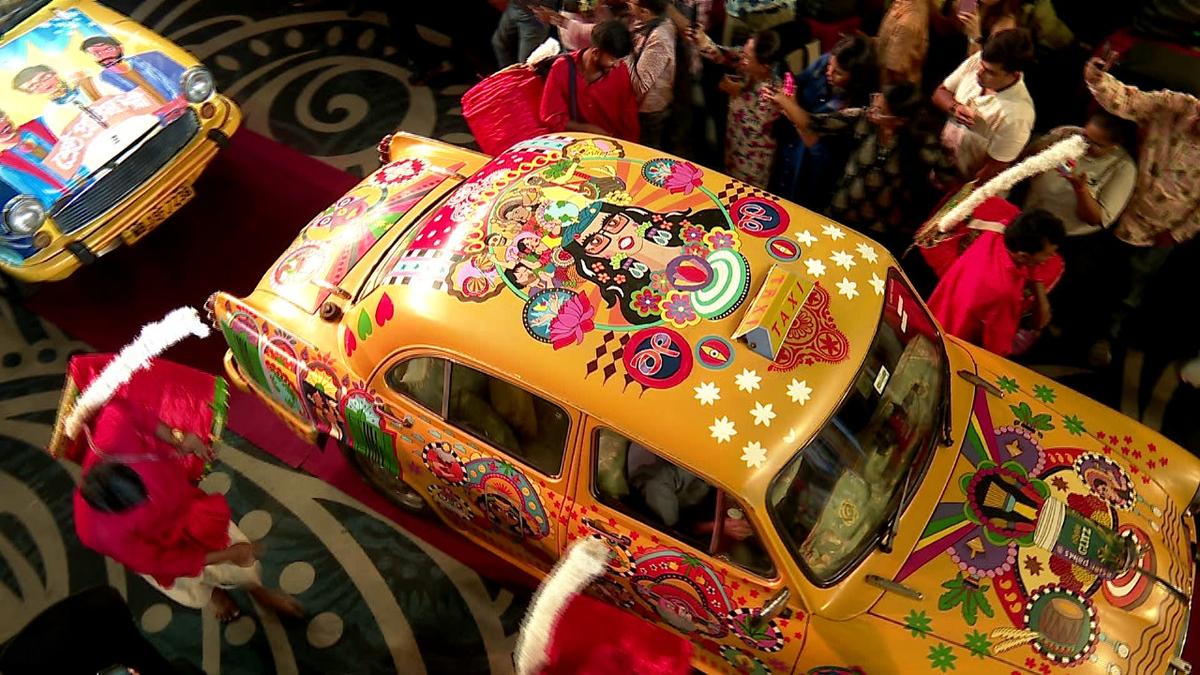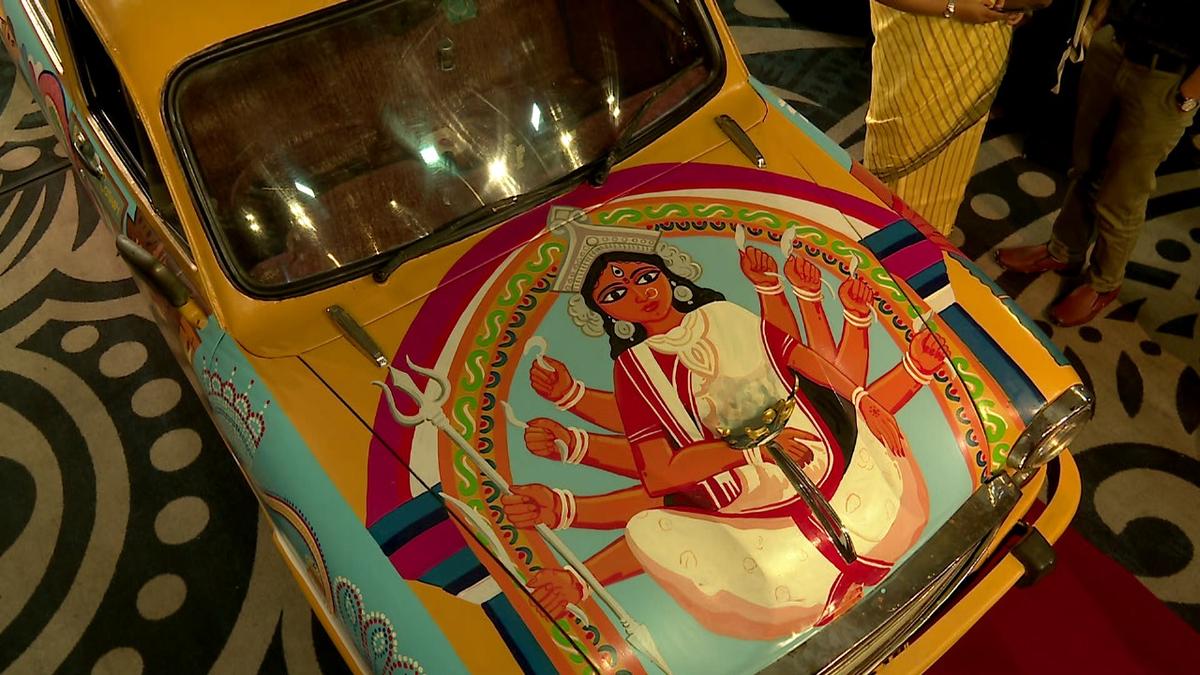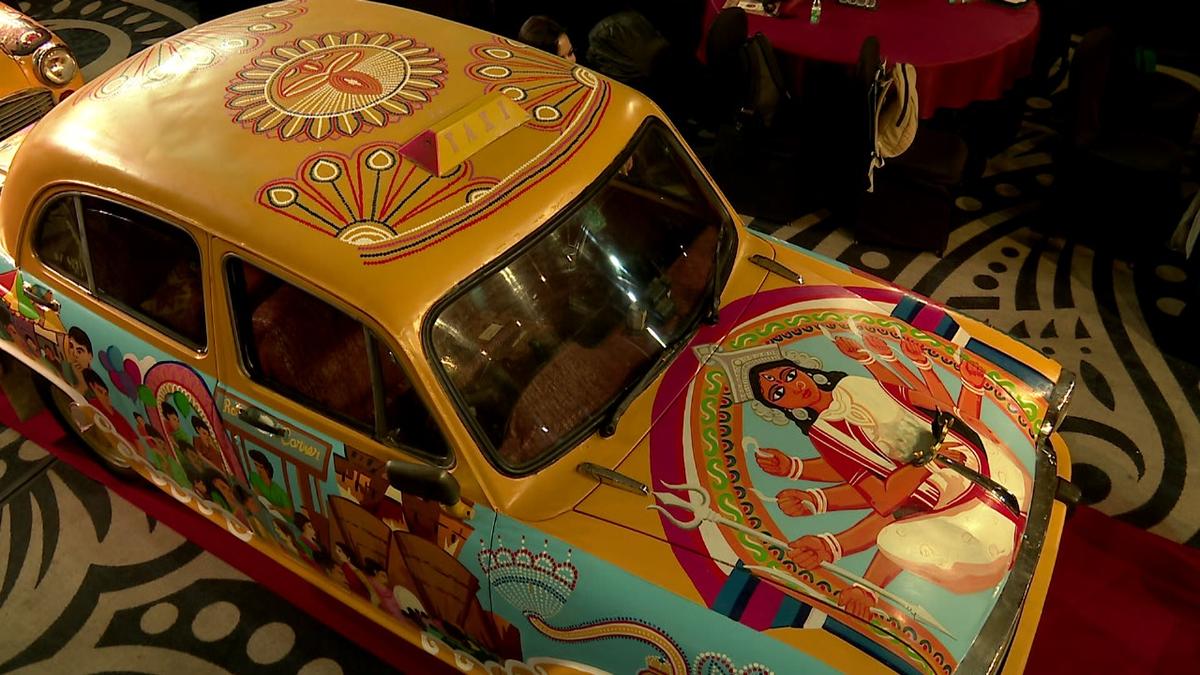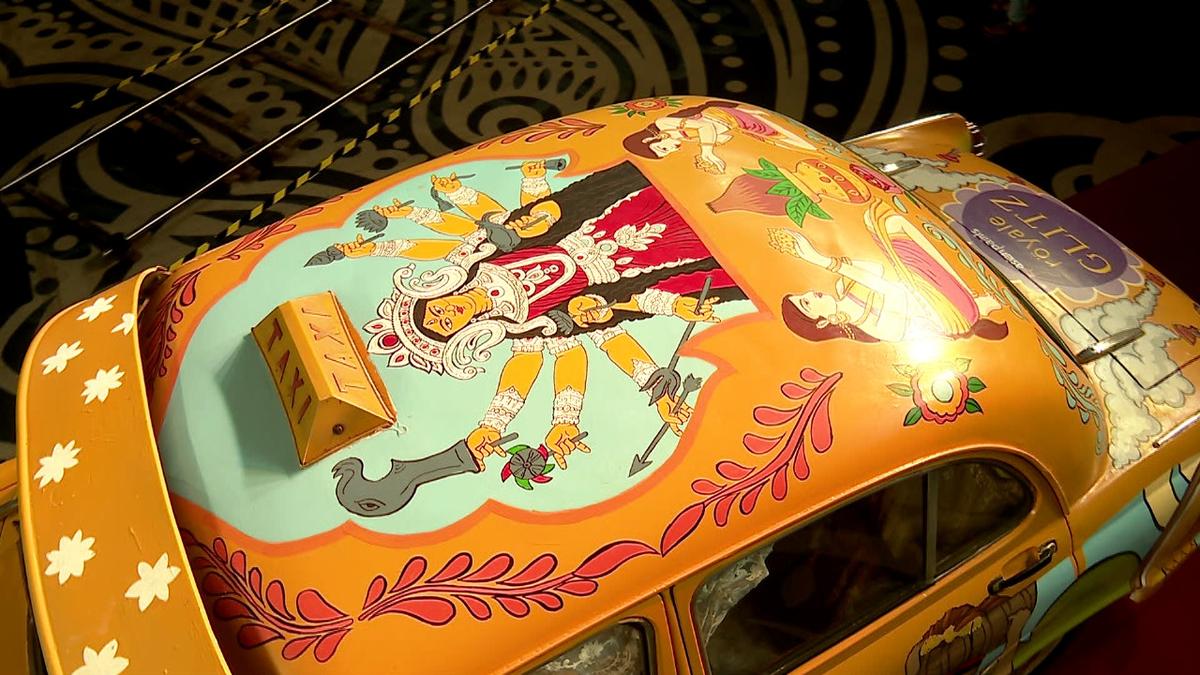Kolkata’s yellow taxis are tricksters of time. Less vehicles, more peddlers of time, every dent on their body, every frayed seat cover is an archive ferrying memories from one end of the city to the other.
Once, Kolkata’s streets moved to the stubborn rhythm of its yellow Ambassador taxis. Today, as these icons slip into memory, they are being summoned back as vessels of history. The year 2025 marks 40 years of the Asian Paints Sharad Shamman, an award that, since 1985, has honoured the most inventive Durga Puja pandals in the city. To mark the milestone, Asian Paints has launched Cholte Cholte 40, a project that reimagines the taxi as a moving chronicle of the city’s legacy.
Each of the 40 cars artistically embody the cultural pulse of decades gone by. Currently, 22 out of the 40 taxis are plying in Kolkata like any other yellow taxi and are not restricted to any specific route. The remaining 18 will be on the streets by September 10, and by September 11, all 40 taxis will be traversing the length and breadth of the city.

Taxis part of Cholte Cholte 40, a project that reimagines the taxi as a moving chronicle of the city’s legacy
| Photo Credit:
Special Arrangement
The taxi project builds on an idea first tested in 2023, when a tram bogie was transformed into a moving gallery showcasing Durga Puja’s artistry. That tram stitched together alpona, cane craft, augmented reality, and museum style storytelling into a living work of art. The taxis shift this gesture from rails to roads, from the vanishing tramline to the receding yellow cab.
Amit Syngle, MD and CEO, Asian Paints, explains why the taxi was selected. He says, “Whether it is families going on the pandal trail, artists carrying their straw and clay from Kumartuli, or judges finding their way through the city, the taxi was integral to Kolkata. Everyone commuted via the yellow taxi. Forty taxis become living props that move through the city and represent each decade. Each decade had its own characteristic and nuance, and each was a period of cultural transition .”

A taxi part of Cholte Cholte 40, a project that reimagines the taxi as a moving chronicle of the city’s legacy
| Photo Credit:
Special Arrangement
At a recent celebratory event at the JW Marriott Hotel in Kolkata, four of the taxis were unveiled. Curated by artists from the city, the bodies of the vehicles came alive with references to Kolkata’s rock-band years, the era of simple, traditional pujas, their evolution into environmentally conscious themes, and finally, the age of digital iconography and social media informed celebrations.
Adding to this rich tapestry are the interiors, upholstered in floral, antique, regal, and vintage textiles from fashion designer Sabyasachi Mukherjee’s Paris X Calcutta collection (a line of wallpapers and textiles for Nilaya by Asian Paints in 2024).Hiranbagh recalls Mughal gardens, Jamshed Jamavar, the prized Kashmiri shawls sold in Bengali homes, Chowringhee, the city’s floral boulevard, Galecha, the Persian carpets of rajbari interiors, India Paradise, the flora of Company School art, and The Company Paisley, the colonial era paisley adaptations.

A taxi part of Cholte Cholte 40, a project that reimagines the taxi as a moving chronicle of the city’s legacy
| Photo Credit:
Special Arrangement
The four decades
The first decade (1985–1995) was rendered by artist Bikramjit Paul. The art on the body of the taxi illustrates an elderly artist carving the face of Ma Durga, and the rickshaw finds a place on the illustration as do dhakis (traditional drummers). The artwork also spotlights a woman creating an alpona or floor painting and the first advertised poster of the Sharad Shaman from the 1985 edition of the Anandabazar Patrika.
The second decade (1995–2005), in Meenakshi Sengupta’s vision blends social commentary, history, and philosophy. Floral designs of LED lights from Chandannagar are drawn on the roof of the vehicle, an image of Ma Durga in a red and white sari, breaking away from her traditional look sits on the bonnet, a panorama displaying the tram, Kolkata’s staple roll shops, balloon sellers, emblematic of the simpler fanfare of Pujo in the early 2000s are drawn out on the body of the ambassador.
Taxis part of Cholte Cholte 40, a project that reimagines the taxi as a moving chronicle of the city’s legacy
| Photo Credit:
Special Arrangement
The third decade (2005–2015), illustrated by Sayan Mukherjee, grew bolder with a depiction of Ma Durga with rebellious locks of hair dominating the roof of the taxi, that highlights themes like women empowerment and breaking the mould of Ma’s older, more traditional, depictions. The introduction of the Sharad Shamman award for Shreshtha Pratima Shilpi (best idol maker) is portrayed on the bonnet, while an illustration of NRIs being welcomed is embodied on the sides of the vehicle
The fourth decade (2015–2024), interpreted by Srishti Guptaroy, unfolded in the digital age. Pandals found a digital home on Instagram, and UNESCO’s 2021 recognition of Durga Puja as Intangible Cultural Heritage sealed its global status.
The ambassador embodying these changes is quirky and features motifs like a pandal hopper clicking a selfie, a lady wearing a Virtual Reality (VR) headset to view Durga Puja pandals, etc.

A taxi part of Cholte Cholte 40, a project that reimagines the taxi as a moving chronicle of the city’s legacy
| Photo Credit:
Special Arrangement
Cities forget, cities reinvent. But Kolkata, obstinate as ever, finds ways to remember. And so the yellow taxi, battered, dying, returns as the city’s timekeeper. In its fading roar lies the pulse of Puja, in its yellow hide the map of 40. It goes on – clattering, rattling, remembering until the last taxi disappears, and even then, it will live on.
Published – September 10, 2025 03:53 pm IST

